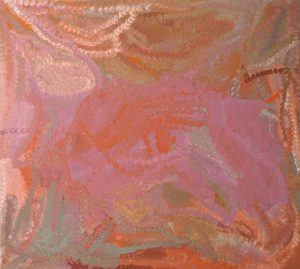Morgan Meis in The Easel:
 There’s an unexpectedly amusing passage in the great German philosopher Immanuel Kant’s Critique of Judgment. Kant is deliberating upon lofty issues like how and why we consider something beautiful. In the course of his complicated philosophical maneuverings he pauses to mention, by way of example, a number of pleasing designs to be found in nature. And then, in a twist, he muses briefly on how the eye and mind delight in the incredible shapes and forms of… wallpaper. Yes, wallpaper.
There’s an unexpectedly amusing passage in the great German philosopher Immanuel Kant’s Critique of Judgment. Kant is deliberating upon lofty issues like how and why we consider something beautiful. In the course of his complicated philosophical maneuverings he pauses to mention, by way of example, a number of pleasing designs to be found in nature. And then, in a twist, he muses briefly on how the eye and mind delight in the incredible shapes and forms of… wallpaper. Yes, wallpaper.
Kant likes wallpaper, and thinks the rest of us like it too, because the shapes to be found on a well-designed piece “mean nothing on their own, they represent nothing … and are free beauties.” That’s to say, we delight in the beautiful forms and shapes of wallpaper precisely because we don’t relate them to anything else. The very fact that the mind doesn’t really know what to do with the shapes or how to categorize them means that we can appreciate them on their own terms.
To me, this is one of the crucial moments in the history of modern art.
More here.
